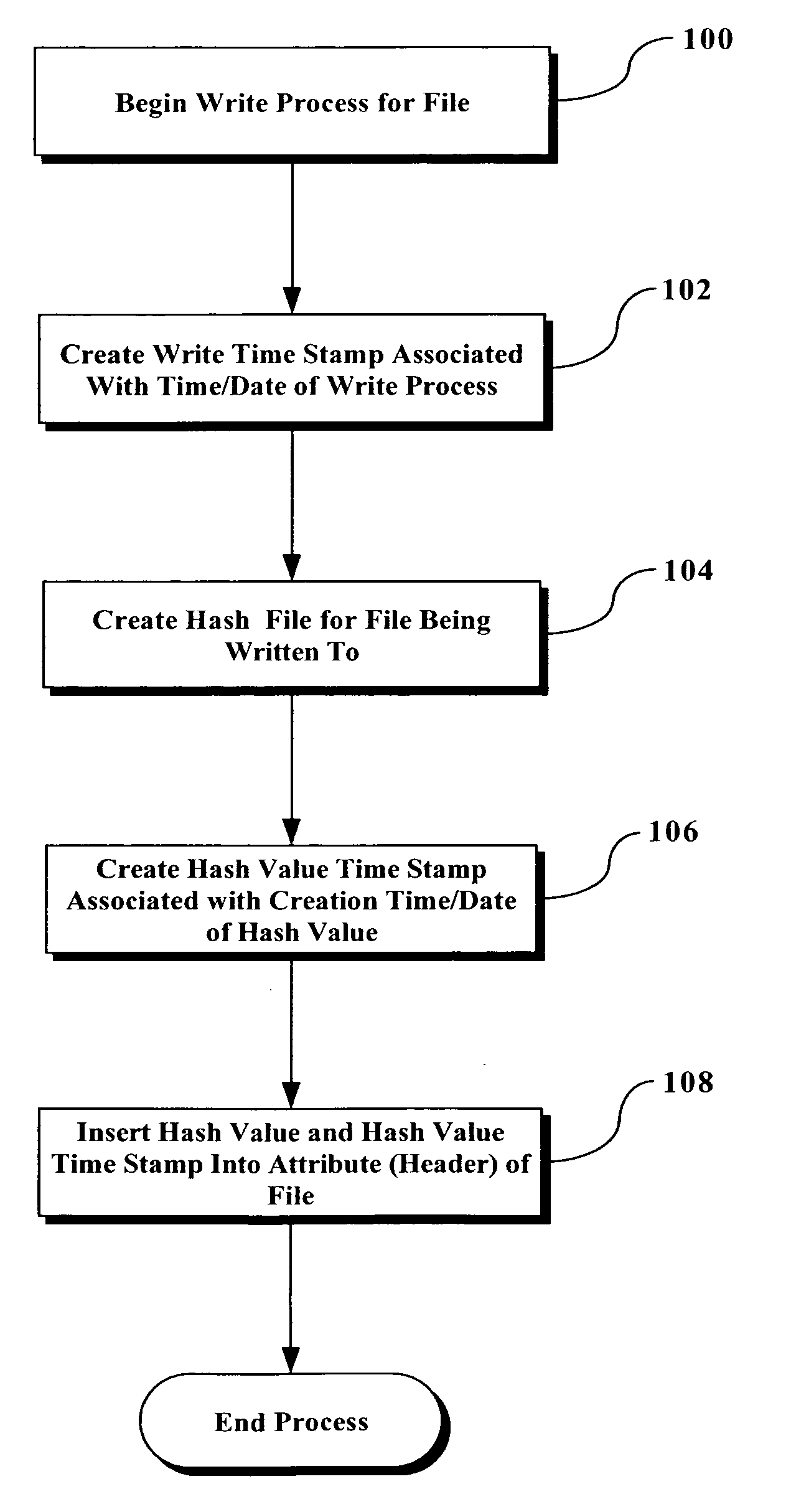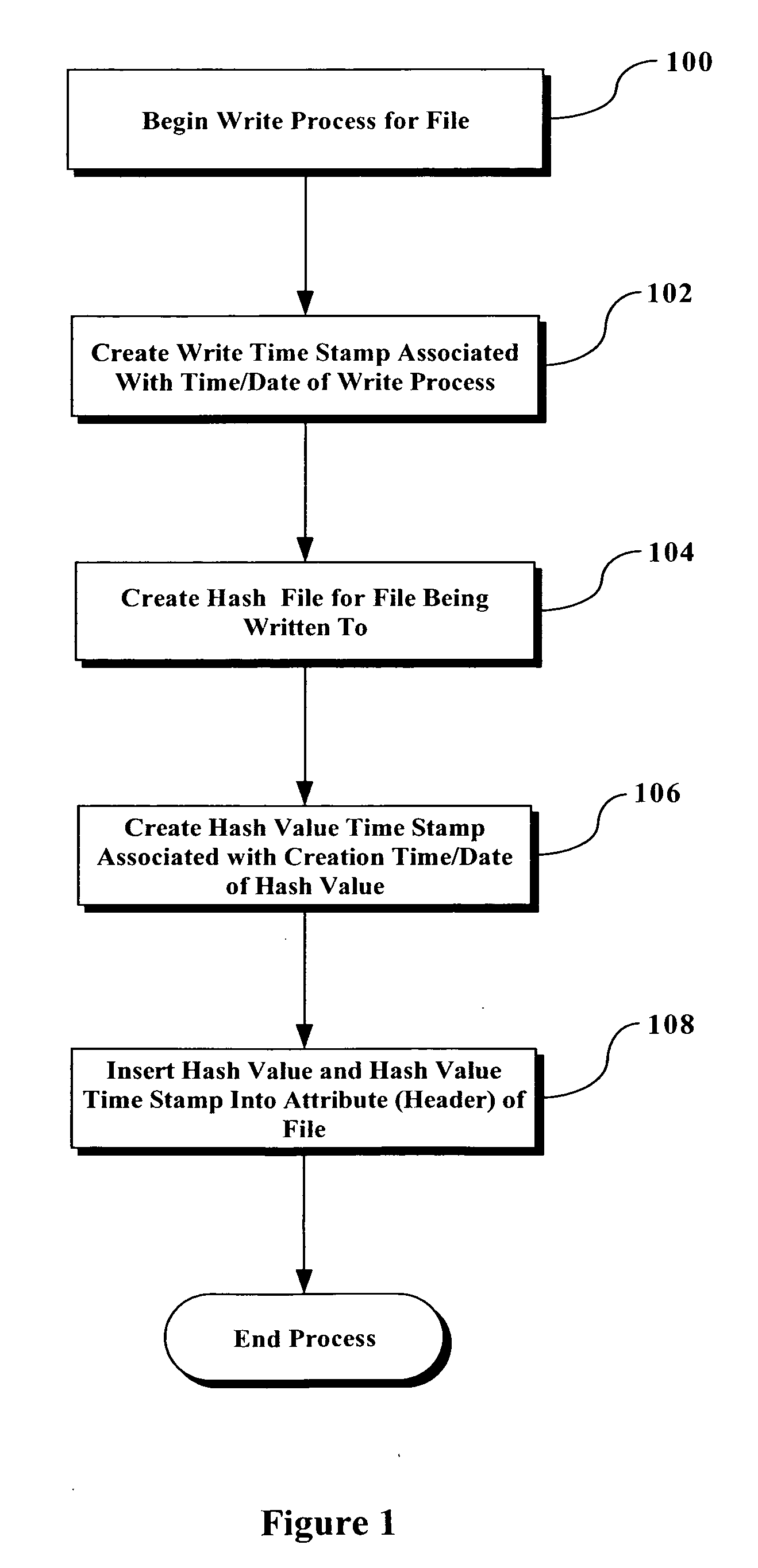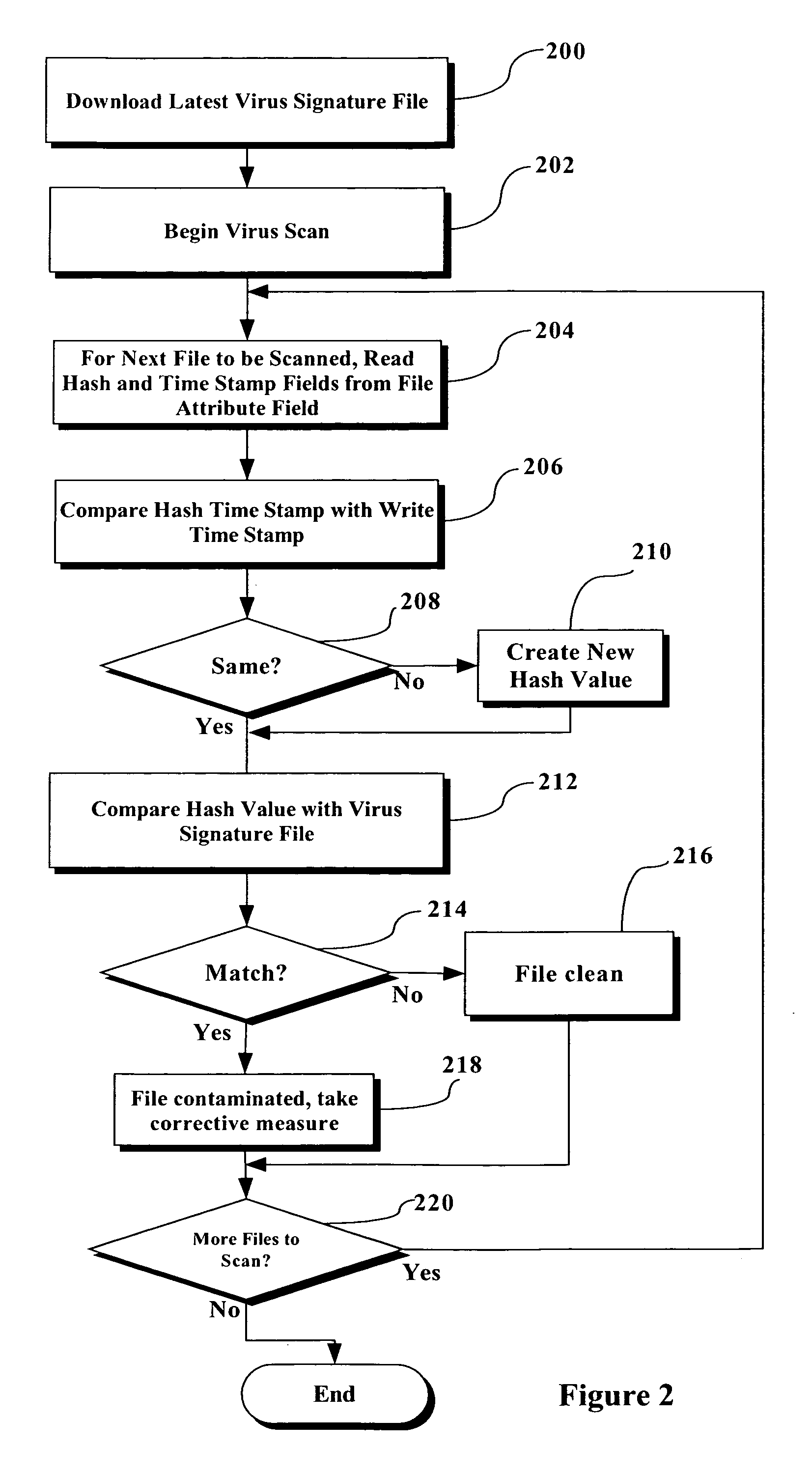Rapid virus scan using file signature created during file write
a file signature and virus scanning technology, applied in the field of virus detection and protection systems, can solve the problems of increasing the scan time, consuming huge amounts of time and resources, and reducing the amount of time necessary, so as to reduce the amount of time needed
- Summary
- Abstract
- Description
- Claims
- Application Information
AI Technical Summary
Benefits of technology
Problems solved by technology
Method used
Image
Examples
Embodiment Construction
[0013]FIG. 1 is a flowchart illustrating an example of the basic steps utilized to create a file signature correlated to the creation of a hash value when a file is being written to, in accordance with the present invention. At step 100, the process begins for performing a write process for a file. This simply involves the writing / modification of the file for any reason. At step 102, a “write timestamp” associated with the time and date at which the write process is performed.
[0014] At step 104, a hash value is created for the file being written to at essentially the same time as the write process has been completed. To avoid problems with slight delays between the actual time that the write process completes and the actual time that the creation of the hash value is completed, a predetermined + / − factor can be applied when making comparisons described below.
[0015] At step 106, a hash value timestamp is created associated with the creation time and date of the hash value. At step ...
PUM
 Login to View More
Login to View More Abstract
Description
Claims
Application Information
 Login to View More
Login to View More - R&D
- Intellectual Property
- Life Sciences
- Materials
- Tech Scout
- Unparalleled Data Quality
- Higher Quality Content
- 60% Fewer Hallucinations
Browse by: Latest US Patents, China's latest patents, Technical Efficacy Thesaurus, Application Domain, Technology Topic, Popular Technical Reports.
© 2025 PatSnap. All rights reserved.Legal|Privacy policy|Modern Slavery Act Transparency Statement|Sitemap|About US| Contact US: help@patsnap.com



